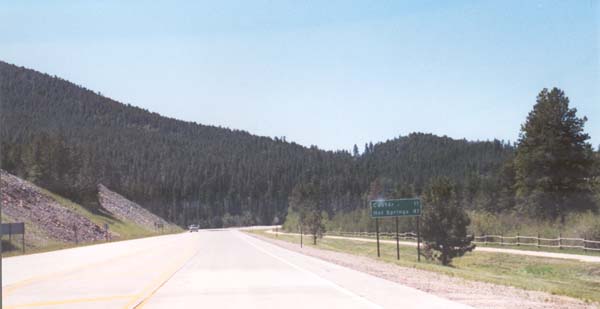
|
On Highway 16, heading south towards the Crazy Horse monument. Highways
89 and 87 are far more scenic, but the car had begun to act up, on large
grades, and we were also strapped for time. The Needles Highway, with it's
tunnels, grades, and wonderful scenery will have to wait for a future trip. |
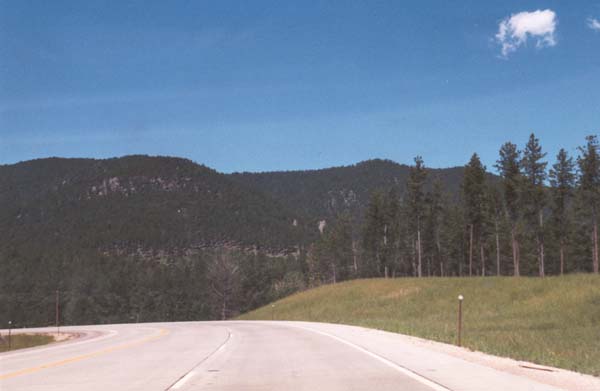
|
The road to Crazy Horse. This is still a relatively flat and open
area for the Black Hills. We are pretty near the north eastern edge of
the area. |
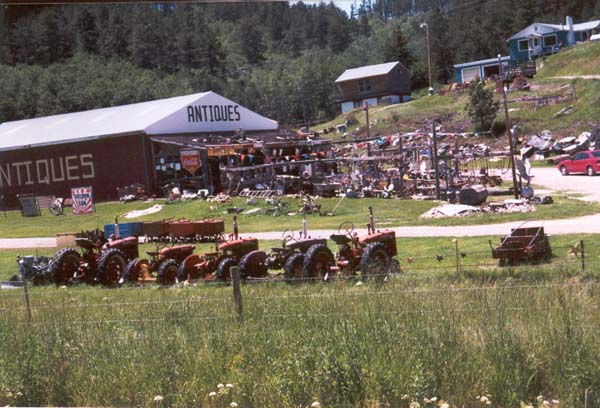
|
What in earth is a this place doing up here in the mountains? This
kind of thing is what I love about the west. You never know what will appear
or where. |
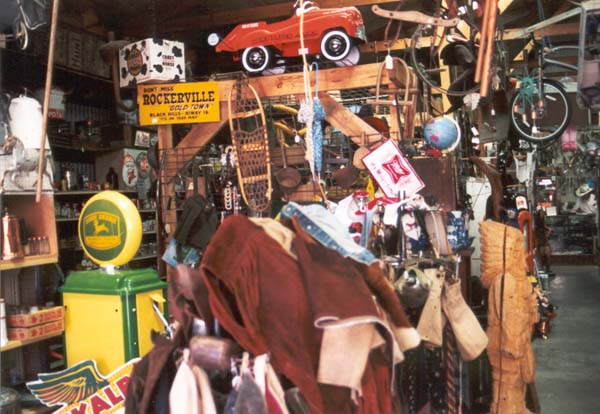
|
Trash or treasure? Only you can decide. I must confess that we spent
a couple of hours wandering through this place. I did buy some things.
I can't remember what though. |
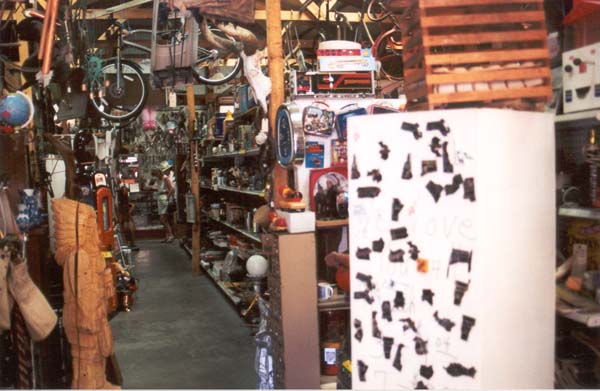
|
More random collections of stuff. It is in no logical order that
I could discern. Still, we came to explore and discover. |
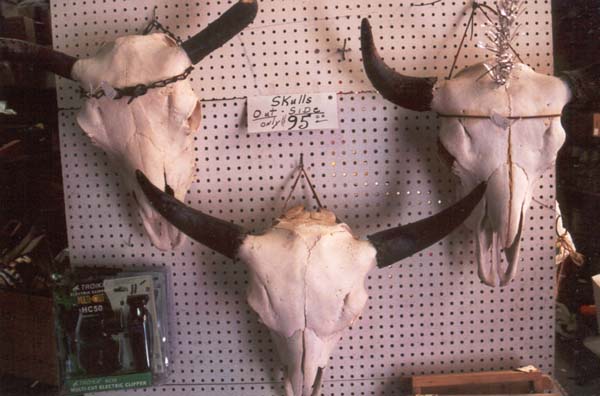
|
So, how's the diet going guys? One of the many symbols of the old
west is a cattle skull. Under the influence of tourist fever, I was almost
tempted to buy one. This is one of those purchases, however, which is doomed
to spend the rest of it's existence in a box up in the attic. I declined
the purchase. |
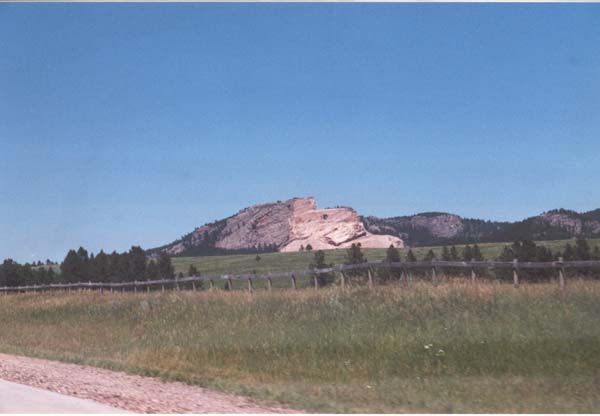
|
Well, this looks interesting. is this mountain going bald? We have
found Crazy Horse. A close look at this photo will reveal the outlines of
a face. |
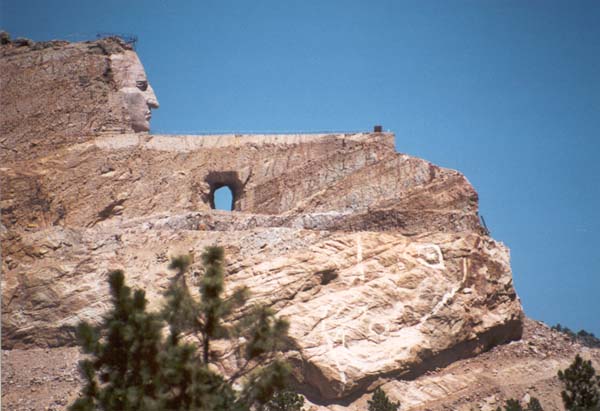
|
A nice overview of the monument in process. The face is finished,
as is the outline of the top of the arm. Markings can be seen on the mountain
side outlining the form of the horse's head. |
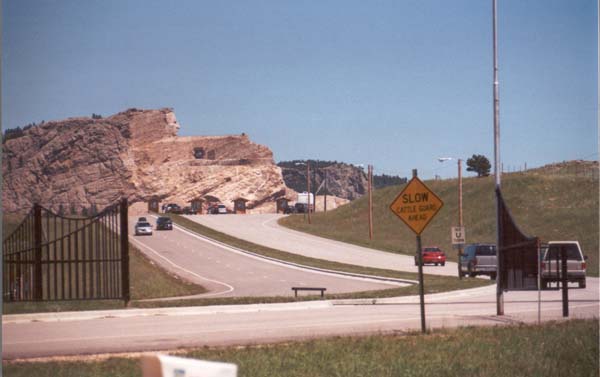
|
Entrance to our newest monument, in progress. While Crazy Horse
can certainly be seen, without paying a fee to enter the gates, there are
a number of attractions and facilities within. They are worth checking out.
There are also bus rides which will take one right onto the monument itself. |
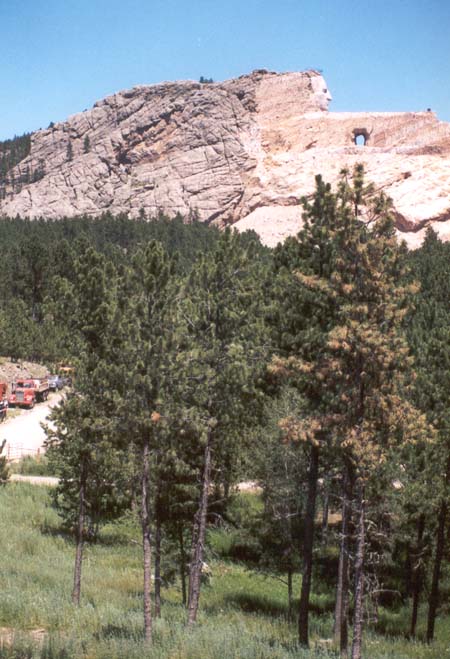
|
Wow! What kind of an effort must it have taken to blow the surface
away from half of a mountain? Even so, the effort is only a small portion
of what will be required to complete the monument as designed. |
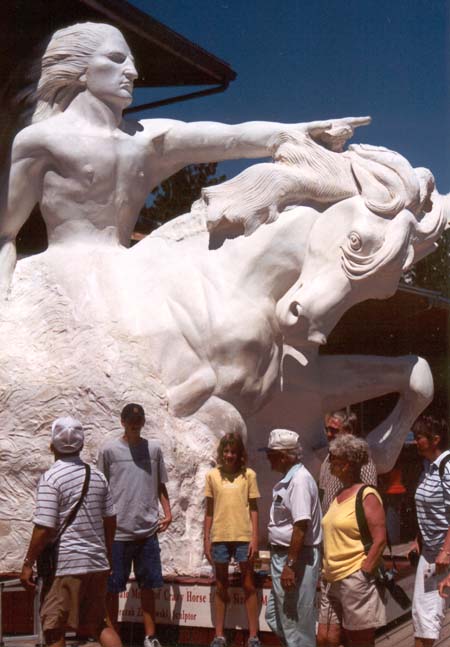
|
A scale model of what the sculpture will look like when it is finished.
Work is progressing, but it will still be decades before it is finished.
A bunch of tourists pose at it's base. |
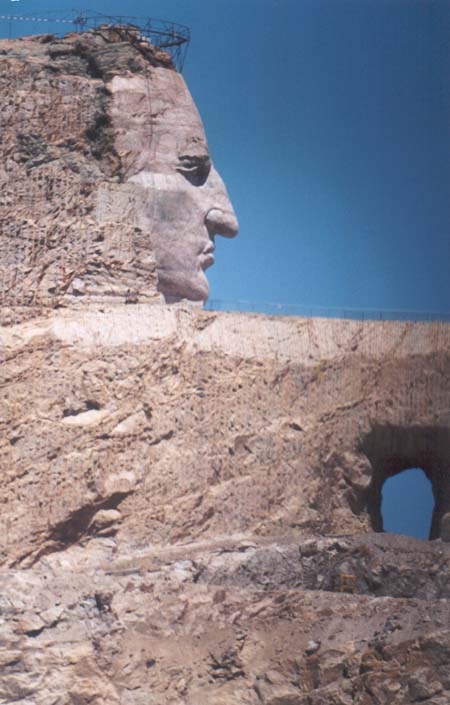 The crown of his head. It almost does look as if Crazy Horse is wearing
a crown. The structure in question is a work and safety platform. A guard
rail can also be seen running up the length of his "arm". The mountain is
being carved using det cord, a military explosive. The project is the work
of Boston-born Sculptor Korczak Ziolkowski. If it seems a bit coincidental
that Crazy horse is in such close proximity to Mount Rushmore, coincidence
plays no part. Korczak Ziolkowski worked on Rusmore as an assistant, for
a very short period of time. Though reputed to have been on good terms with
Gutzum Borglum, a disagreement (many say it was a brawl) with Lincoln Borglum
ended the working relationship.
The crown of his head. It almost does look as if Crazy Horse is wearing
a crown. The structure in question is a work and safety platform. A guard
rail can also be seen running up the length of his "arm". The mountain is
being carved using det cord, a military explosive. The project is the work
of Boston-born Sculptor Korczak Ziolkowski. If it seems a bit coincidental
that Crazy horse is in such close proximity to Mount Rushmore, coincidence
plays no part. Korczak Ziolkowski worked on Rusmore as an assistant, for
a very short period of time. Though reputed to have been on good terms with
Gutzum Borglum, a disagreement (many say it was a brawl) with Lincoln Borglum
ended the working relationship.
Though such a work was discussed, with
Lakota Chief Henry Standing Bear, as early as 1939, efforts on Crazy Horse
did not begin in earnest, until 1948, and will likely go on for many more
decades. This is a considerably more ambitious effort than the one made
ot Mount Rushmore. It is by no means certain that Crazy Horse will ever
be completed. Korczak Ziolkowski died in October of 1982, so like Gutzum
Borglum, he will never see completion of the work he began. The project
is being continued by family members and by the Crazy Horse Foundation.
Something on the order of ten million tons of rock has been blasted from
the mountain so far. |
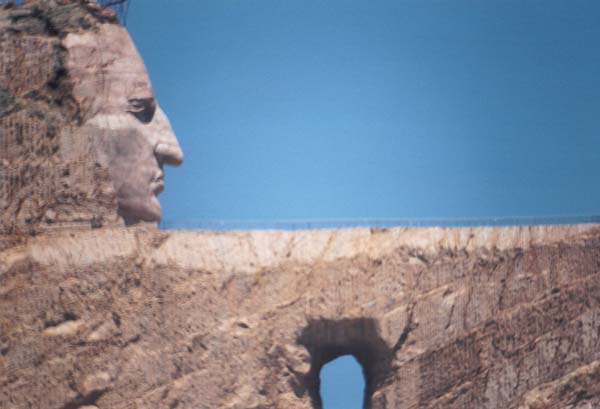
|
A look at part of the span of the arm, with the face looking out
along it's length. |
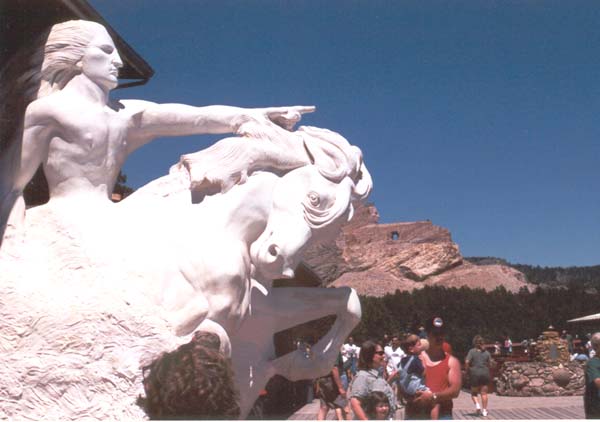
|
A typical photo composition here, but how could I resist? The scaled
version overlaid upon the full sized work in progress. As can be seen by
a comparison of the two, there is an incredible amount of work yet to be
done. |











 The crown of his head. It almost does look as if Crazy Horse is wearing
a crown. The structure in question is a work and safety platform. A guard
rail can also be seen running up the length of his "arm". The mountain is
being carved using det cord, a military explosive. The project is the work
of Boston-born Sculptor Korczak Ziolkowski. If it seems a bit coincidental
that Crazy horse is in such close proximity to Mount Rushmore, coincidence
plays no part. Korczak Ziolkowski worked on Rusmore as an assistant, for
a very short period of time. Though reputed to have been on good terms with
Gutzum Borglum, a disagreement (many say it was a brawl) with Lincoln Borglum
ended the working relationship.
The crown of his head. It almost does look as if Crazy Horse is wearing
a crown. The structure in question is a work and safety platform. A guard
rail can also be seen running up the length of his "arm". The mountain is
being carved using det cord, a military explosive. The project is the work
of Boston-born Sculptor Korczak Ziolkowski. If it seems a bit coincidental
that Crazy horse is in such close proximity to Mount Rushmore, coincidence
plays no part. Korczak Ziolkowski worked on Rusmore as an assistant, for
a very short period of time. Though reputed to have been on good terms with
Gutzum Borglum, a disagreement (many say it was a brawl) with Lincoln Borglum
ended the working relationship. 
